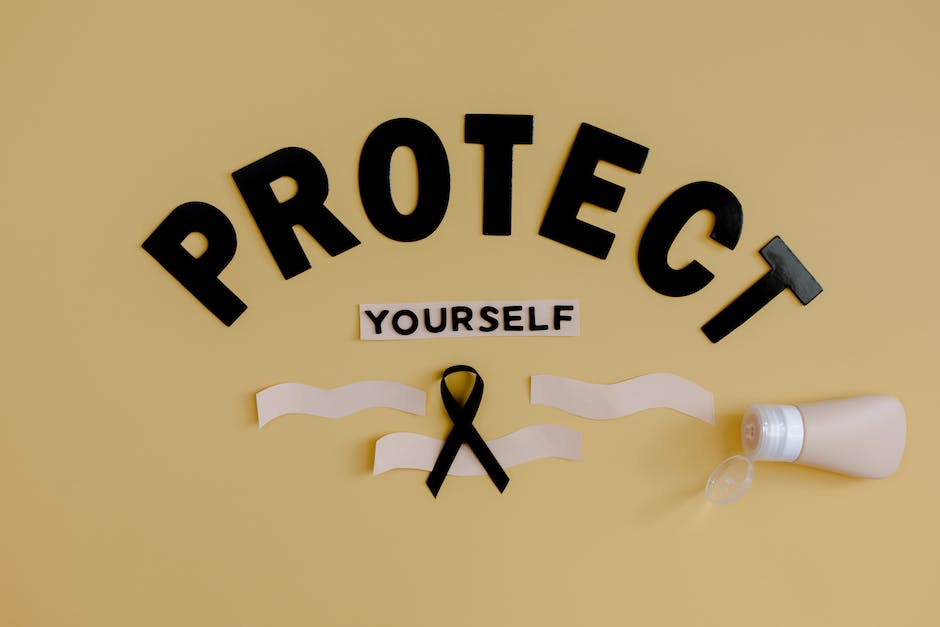Basal Cell Carcinoma(BCC) is a form of non-melanoma skin cancer that, though common, is not commonly understood by the general public. Unfortunately, lack of information and awareness about BCC can lead to delayed diagnosis, causing what could have been a potentially curable condition to become a life-threatening disease. This discourse aims to provide a comprehensive overview of BCC including its definition, symptoms, and risk factors while shedding light on the impact it has on life expectancy, particularly when left untreated. The perils of neglecting BCC and the crucial role that early diagnosis and appropriate treatment play in managing this type of skin cancer will also be stringently examined.
Basal Cell Carcinoma Definition and Symptoms
Basal Cell Carcinoma: Definition and Causes
Basal Cell Carcinoma (BCC) is the most common form of skin cancer (non-melanoma), originating from the basal cells in the deeper layer of the skin (epidermis). It often presents itself as a small, shiny bump or nodule on the skin, predominantly in areas exposed to the sun. Other times, it can manifest as a red patch, a sore, a growth with a dip in the center, or a scar-like area.
Primary causes of BCC include prolonged exposure to ultraviolet (UV) radiation from the sun and tanning beds. Age, fair skin, a history of sunburns, chronic or severe skin damage, a weakened immune system, exposure to radiation, and a family-history of BCC also increase the risk of the disease.
Symptoms of Basal Cell Carcinoma
Symptoms of BCC can vary significantly depending on the type but some common signs include a persistent open sore, a reddish or irritated area, a shiny bump or nodule, a pink growth, or a scar-like, white, waxen area. These are often mistaken for other skin issues such as psoriasis or eczema, underscoring the importance of seeking medical advice when persistent skin changes occur.
Life Expectancy with Untreated BCC
The good news is that BCC is generally slow-growing and, for most people, does not spread to other parts of the body. However, if untreated, it can damage and disfigure the skin and tissues around it, sometimes causing significant cosmetic concern. It can invade bone and other tissues beneath the skin if neglected for too long.
It’s important to note that a lack of treatment can lead to larger, more difficult-to-treat BCCs. Very rarely, basal cell carcinoma can become advanced, spreading to nearby lymph nodes and other parts of your body, which could be life-threatening.
Nevertheless, when it comes to life expectancy, BCC rarely proves fatal. Although this disease influences one’s quality of life because it invades and damages tissue surrounding the tumor, it usually doesn’t impact life expectancy significantly, especially when treated in a timely manner. Therefore, it’s important to consult with medical experts and seek treatment promptly if you suspect you have BCC.
Understanding the Importance of Early Detection
Recognizing Basal cell carcinoma (BCC) in its early stages is crucial to successful treatment and favorable outcomes. If it’s caught early, BCC (which is primarily a localized disease that doesn’t spread beyond the skin) has a five-year survival rate of roughly 99%. Yet, the survival rate can decrease if the cancer is neglected or diagnosed late. As such, routine skin examinations, swift diagnosis, and fitting therapeutic measures are essential in managing BCC effectively.

Impact of BCC on Life Expectancy
Getting to Know BCC
BCC is the most frequent skin cancer type, typically resulting from extended exposure to ultraviolet (UV) radiation, whether from the sun or tanning beds. This skin cancer starts in the basal cells located at the deepest level of the epidermis, the skin’s external layer. Despite it being prevalent, BCC rarely metastasizes or migrates to other body parts. Nevertheless, BCC can cause significant disfigurement and health problems if not treated timely.
BCC and Life Expectancy
Generally, BCC does not significantly impact life expectancy. According to the American Cancer Society, when detected early, the 5-year survival rate for patients with localized BCC is around 99%. Even if the cancer has spread to nearby lymph nodes or tissues, the 5-year survival rate remains at 70%. However, it’s important to note that these numbers do not mean that BCC can’t be serious. If left untreated, BCC can cause severe disfigurement and could potentially lead to other health issues.
One recent population-based cohort study in the Netherlands explored the prognostic impact of BCC on life expectancy. The relative survival rates were close to 100% for both men and women with BCC, suggesting survival for patients with BCC is comparable to that of the general population.
Untreated BCC and Its Impacts
While BCC, especially when treated early, does not typically impact life expectancy, ignoring the condition could lead to significant complications. Untreated BCC can grow, invading and damaging surrounding healthy tissues and organs. This destruction can cause deformity, especially when situated near the nose, eyes, or ears.
Moreover, while rare, BCC has the potential to metastasize. This is more likely if a person has had the skin cancer for a long time and it was left untreated. Metastatic BCC, though uncommon, can be life-threatening and would significantly reduce life expectancy.
Prevention and Early Detection
Prevention and early detection are crucial in managing BCC and ensuring it won’t affect the overall life expectancy. Limiting exposure to UV radiation through sun-protective clothing, broad-spectrum sunscreen, and avoiding tanning beds reduces the risk of developing BCC. Regular skin checks, either by self-examination or clinical dermatologic examinations, can assist in early detection, allowing for immediate treatment and hence minimally affecting life expectancy.
A Closer Look at BCC’s Impact on Life Expectancy
It’s critical to understand that while Basal Cell Carcinoma (BCC) itself doesn’t significantly curtail life expectancy, neglecting treatment might. Unattended BCC can result in local damage and, on rare occasions, metastasis. However, the advancements in skin cancer treatments and early detection methods inspire optimism. Today, most individuals diagnosed with BCC can expect a life span comparable to those unaffected by the disease, particularly if the condition is promptly treated.

The Dangers of Leaving BCC Untreated
Demystifying Basal Cell Carcinoma (BCC)
Commonly manifesting in sun-exposed parts of the body, Basal Cell Carcinoma, abbreviated as BCC, is a familiar variety of skin cancer, constituting about 80% of all instances. Although BCC is not as lethal as other types of skin cancer such as melanoma, disregarding it can lead to substantial health complications. Therefore, understanding BCC is key to spotlighting the significance of early diagnosis and timely treatment.
Progression and Risely Health Complications
When left untreated, BCC can grow and spread to nearby tissues, causing damage and disfigurement. It typically progresses slowly and remains localized for a long time. However, the cancerous cells can eventually invade deeper tissues, including fat, muscle, and bone. Extensive growth can lead to ulceration and necrosis, causing pain, discomfort, bleeding and infection.
In rare cases, BCC can spread (metastasize) to other parts of the body, including lymph nodes or internal organs. This is more common with larger, more aggressive tumors and can lead to more severe health complications, including organ failure and death. However, the risk of metastasis is incredibly low, occurring in less than 0.5% of all cases.
Impact on Life Expectancy
The overall impact of untreated BCC on life expectancy is hard to ascertain. The vast majority of BCC cases, when detected and treated early, have a high survival rate. If left untreated, the progress and potential complications, including metastasis, can significantly affect the patient’s quality of life, and in rare cases, can lead to death.
Although data is lacking on life expectancy specifically with untreated BCC, the relatively slow growth of basal cell cancers and their tendency to stay localized suggest that the immediate impact on survival might be smaller than with other cancer types. However, the complications arising from local tissue damage, including chronic wounds and infections, can contribute to overall ill-health and potentially shorten life expectancy.
Mental and Emotional Implications
Aside from the physical implications, it’s crucial to consider the psychological impact of living with untreated BCC. Patients may experience anxiety about their health or appearance, leading to a reduced quality of life. This can exacerbate health issues and further decrease lifespan.
The Significance of Prompt Diagnosis and Treatment
Despite basal cell carcinoma (BCC) being known to be less aggressive than other forms of skin cancer, it is vital not to undermine the importance of immediate diagnosis and treatment. Early intervention not only amplifies survival rate, but also significantly reduces the chance of disfigurement, along with other secondary complications caused by the proliferation of cancer cells. Scheduling regular skin inspections, particularly for people who are frequently exposed to the sun or have a personal or familial history of skin cancer, is key to early detection and successful treatment.

Photo by janoschlino on Unsplash
Importance of Early Diagnosis and Treatment for BCC
Boosting Life Expectancy with Early BCC Management
Grasping the significance of swift diagnosis and initiation of treatment for basal cell carcinoma (BCC) can make crucial differences in life expectancy. BCC, the most diagnosed skin cancer with an estimated 4.3 million annual cases in the United States, can lead to notable disfigurement and cause severe localized damage if ignored. In rare cases, it can even be fatal. This underscores the pivotal role of timely detection and treatment in mitigating potential BCC damage, elevating the patient’s quality of life, and lengthening life expectancy.
Available Treatments for BCC
Various treatment options are available for BCC, depending upon the individual patient and the stage and severity of the disease. These treatment options include medical therapies, surgical interventions, and radiation therapy. Medical therapies such as topical agents, oral medications, and targeted therapies aim to destroy cancer cells or control their growth. Surgical interventions, including excision, Mohs surgery, and curettage and electrodessication, remove the cancerous tissue. In contrast, radiation therapy uses high-energy beams to kill cancer cells.
Importance of Regular Skin Checks
The importance of regular skin checks cannot be overemphasized. Regular skin examinations, both self-conducted and by a healthcare professional, are instrumental in detecting changes in existing moles or the identification of new ones, early signs of skin cancer including BCC. Studies show that individuals who conduct regular skin checks have higher rates of early skin cancer detection. This proactive approach aids in preventing the progression of BCC, fostering better management of the disease, reducing morbidity, and improving the patient’s quality of life and life expectancy.
Untreated BCC and Life Expectancy
In the absence of treatment, BCC can cause substantial local destruction and disfigurement, leading to a diminished quality of life. However, it rarely metastasizes or leads to death. According to research, less than 0.1% of cases metastasize, and less than 0.003% of cases turn fatal. The slow-growing nature of BCC means that in many cases, even without treatment, it tends not to severely impact life expectancy. However, the potential consequences in terms of disfigurement and damage to surrounding areas underline the importance of processing with diagnosis and treatment at an early stage for better life quality. Functioning can be impeded based on the location of the tumor, and in rare cases where the tumor becomes advanced before detection, more serious health complications may ensue.

With awareness and education, we can play a proactive role in our health and well-being. Understanding the core facts about Basal Cell Carcinoma as a potentially life-altering disease, realizing the repercussions of leaving it untreated, and recognizing the imperative nature of early diagnosis and treatment, we can substantially boost our chances against BCC. Life expectancy with untreated BCC doesn’t have to be a chilling reality for anyone. Regular skin checks, appropriate treatment, and healthy lifestyle adaptations serve as a robust shield against this skin disparity. Knowledge is power, and in this case, it can be the difference between life and death.
